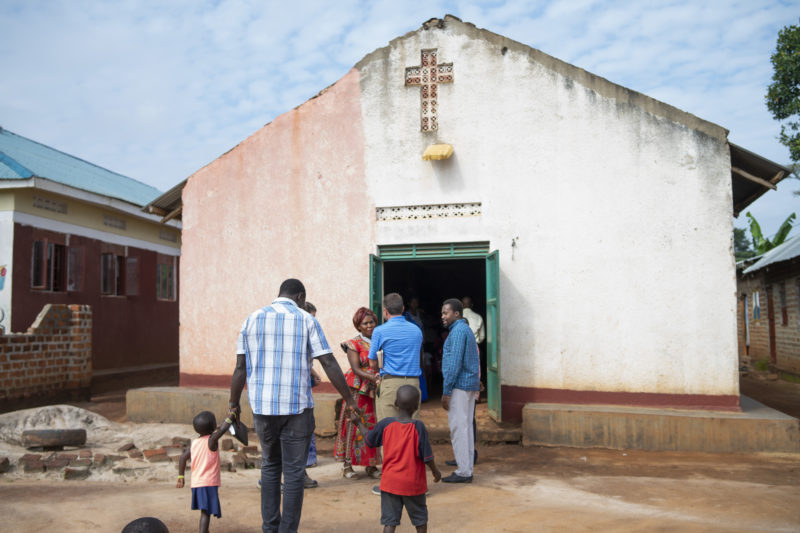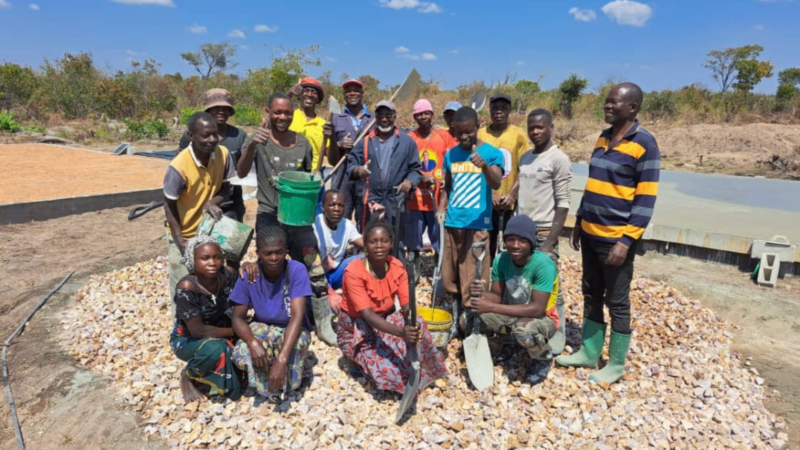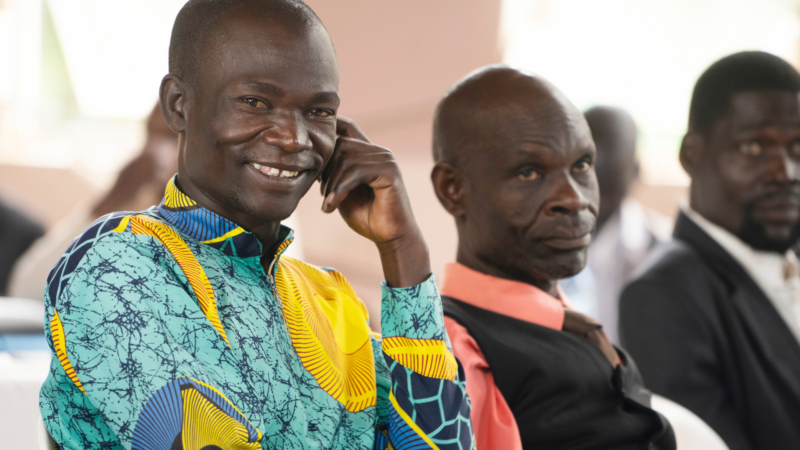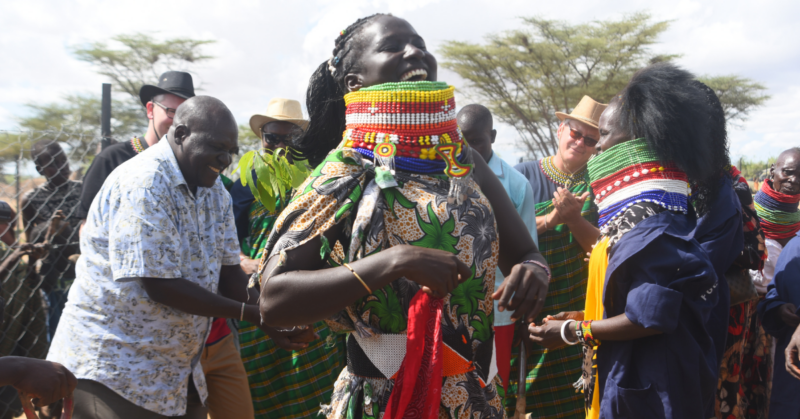*Guest blog post reprinted with permission from the The Chalmers Center (Bright Hope’s Hope for Tomorrow program is modeled very similarly to the below method researched by The Chalmers Center).
Maria walked to the front of God’s Compassion Church of Manila and testified, “My child would have died had it not been for the help of the members of the savings group. I was able to get a loan for the medicine, and they also prayed for me, and visited my sick child.” Maria sat down, and then Camilla stood and explained how the savings group members had encouraged her to borrow some money so that she could start a small cookie-selling business. She went on to share that the profits from this business were enabling her to meet the daily needs of her children.
The three hundred people in the church listened intently as Maria, Camilla, and the other twenty-four members of the church’s savings group shared how God had used it to bless their lives. The economic benefits were obvious to all in attendance. Lacking access to formal banking services, these mothers had always struggled to save and were usually unable to borrow at all without resorting to expensive and risky loan sharks. In contrast, the savings group enabled the mothers to save and lend these savings to one another. The results had been nothing short of phenomenal, the loans made by the group had a 100% repayment rate, and the interest paid on the loans enabled members to earn dividends averaging 50% in annual terms.1
How could something so miraculous happen in a place with so few resources? God is at work, to be certain, and He is working here through the tool of church-centered microfinance.
Making of a Legend2
The standard story of microfinance has become almost legendary:
Lend money to materially poor people so that they can start or expand microenterprises in order to earn a living. As a result, the incomes of the borrowers go up, lifting them and their families out of poverty. Moreover, as loans are repaid, the money can be lent over and over to lift even more people out of poverty. If one is looking for a sustainable approach to poverty alleviation, it doesn’t get much better than this!
Indeed, this “microcredit-for-microenterprises” story of microfinance is truly inspiring—so inspiring that for the past several decades it has been one of the leading strategies for alleviating poverty in the Majority World.
In reality, microfinance is both so much less and so much more than this story suggests. It is less, because it is unlikely that the vast majority of the world’s poor will achieve a substantial increase in their incomes through loans to microenterprises. It is more, because researchers and practitioners are discovering that poor households need a vast range of financial services—including many types of loans, savings, insurance, and money-transfer services—and they are experimenting with innovative ways to address those needs. Seen in this light, microfinance has the potential to impact materially poor households in more ways—albeit more subtle ways—and on a much larger scale than the original “microcredit-for microenterprises” story.
Recalibrating Expectations
There has been some recent disillusionment with the “microcredit-for-microenterprises” story. In contrast to the legend, a number of studies have found that microloans are not launching most materially poor microenterprise owners on a rapid upward trajectory out of poverty. In addition, reports of unscrupulous practices by some microfinance institutions have left many wondering if lenders are more interested in lining their own pockets than helping the needy.
Why don’t microloans put most borrowers on the upward escalator out of poverty? There are a number of factors at work, the most important one being that most microenterprise owners are not actually entrepreneurs. In the absence of jobs, many poor people are forced to operate their own businesses as a means of survival. But being an “entrepreneur by force” is quite different from having the skills to launch an expanding small business.
However, the fact that microfinance is not what many thought it was doesn’t negate the fact that it can be a powerful tool to improve the lives of billions.
Think of it this way: What if you were told that there was a low-cost, church-centered ministry that could save the lives of vulnerable children, keep them in school, improve their parents’ marriage, and lead their entire family into a deeper relationship with Jesus Christ? That would sound pretty fantastic, wouldn’t it? While microfinance is unlikely to dramatically increase a poor household’s income in the short run, it can and often does have these very positive effects.
Microfinance needs a new narrative—one that recalibrates our expectations. This new narrative needs to expect less out of the “microcredit-for-microenterprises” approach. At the same time, this new narrative needs to open our eyes to see the incredible opportunities for microfinance as a whole.
The Vast Potential of the “Microfinance-for-Households” Approach
In order to understand this broader perspective, it is helpful to start by focusing on materially poor households rather than on the microenterprises that only a small fraction of those households own. Then we can ask: What financial services are needed by the nearly 3 billion people living in those households?
Detailed research has found that materially poor households need financial services for a wide range of needs:
- Consumption Smoothing: Households are engaged in continuous financial management, saving, and borrowing to ensure they can meet their daily consumption needs in the face of incomes that are small, irregular, and unpredictable.
- Business Investments: Due to few employment opportunities, many materially poor households are forced to be self-employed (see above). They need financial services to provide capital for start-up, day-to-day operations, and business expansion.
- Household Investments: Like any of us, materially poor households need financial services to enable them to save or borrow for relatively large expenditures such as repairing a leaky roof, buying a cooking pot, or paying school fees for their children. Although these expenditures may sound less exciting than business investments, they are crucial for the family’s health and long-term survival. In particular, keeping children in school is absolutely essential for the family’s long-run economic health.
- Life-Cycle Needs: Weddings, funerals, and other significant milestones can consume a very high percentage of a family’s annual income. Savings and loan services can help to pay for these events, as can insurance products such as life insurance and burial insurance.
- Emergencies: Unexpected events can put an enormous strain on poor families. In particular, health emergencies are one of the leading reasons that families fall into a financial crisis. Thus, in addition to being able to save and borrow, multiple forms of insurance to help with emergencies are vitally needed throughout the Majority World.
Note that within each of these categories, a range of financial services need to be developed, and each of these services needs different pay-in and pay-out structures for people living at different levels of poverty. The possibilities for developing much-needed financial interventions are virtually endless. That’s where the “microfinance-for-households” approach steps in. By creatively offering a range of savings, loans, and insurance services, it is possible to stabilize the household, reduce its vulnerability, and increase its ability to take steps out of poverty.
Although stabilizing a family’s consumption seems less exciting than dramatically increasing it, the effects may be more profound than meets the eye. When a household is brought back from the edge of a financial cliff, the effects can be dramatic. With death and disaster less imminent, it becomes possible for the household to catch its breath a bit, to have a bit more peace of mind, to dare to think about the future, and maybe even to acquire a small dose of one of the most powerful antidotes to human suffering: hope.
Moreover, the methodologies employed in microfinance ministries allow for even more powerful effects. Since poverty can be conceived of as brokenness in people’s foundational relationships with God, self, others, and the rest of creation, by intentionally incorporating evangelism and discipleship, church-centered microfinance ministries are able to address all four of these relationships, thereby having more profound effects than immediately meets the eye.
The Church Is the Key
For many years, Bright Hope has worked with churches in the Majority World to help them launch, sustain, and multiply savings groups. Why the church, though? Churches are often stable, trusted institutions in their communities, places where people already gather to share the deep things of their lives and serve one another. But the reasons are so much more than just practical. Local churches are the living embodiment of God’s kingdom here and now—the place where the various causes of material poverty (individual and systemic brokenness, false stories of change, destructive formative habits, and demonic forces) are all rightly addressed in a loving community under the authority of Jesus. Through Bright Hope’s Hope for Tomorrow program thousands of local churches have been equipped to launch savings groups like this.
Through such church-centered micro-finance ministries, Bright Hope longs to see local churches across the Majority World use their own gifts and resources to foster lasting spiritual, social, and economic change in the lives of the materially poor. The church should be the place where healing happens!
- These two paragraphs adapted from Brian Fikkert and Russell Mask, From Dependence to Dignity: How to Alleviate Poverty through Church-Centered Microfinance (Grand Rapids, MI: Zondervan, 2015), 250-251.
- Much of this article adapted from Fikkert and Mask, From Dependence to Dignity, 53-72




